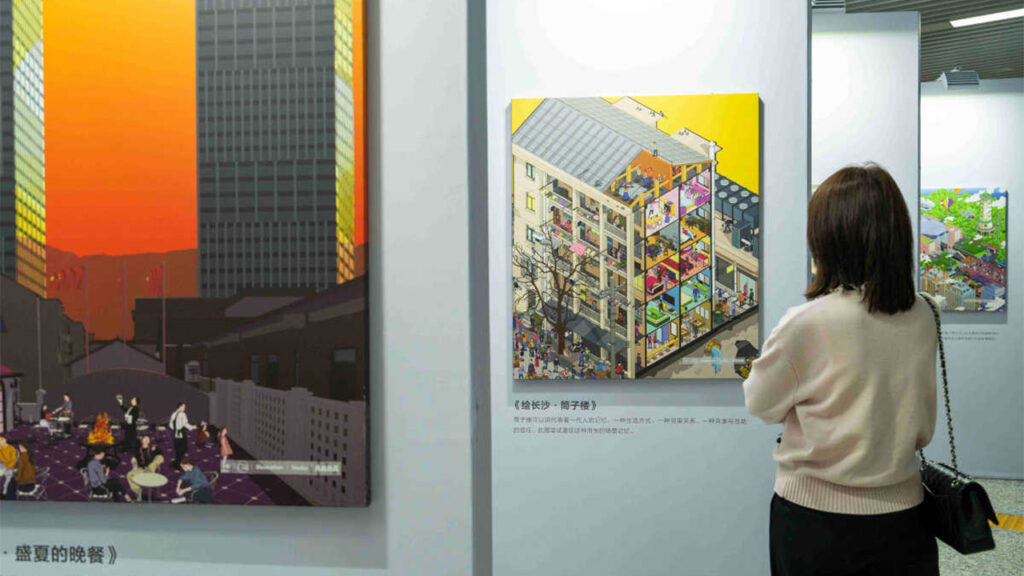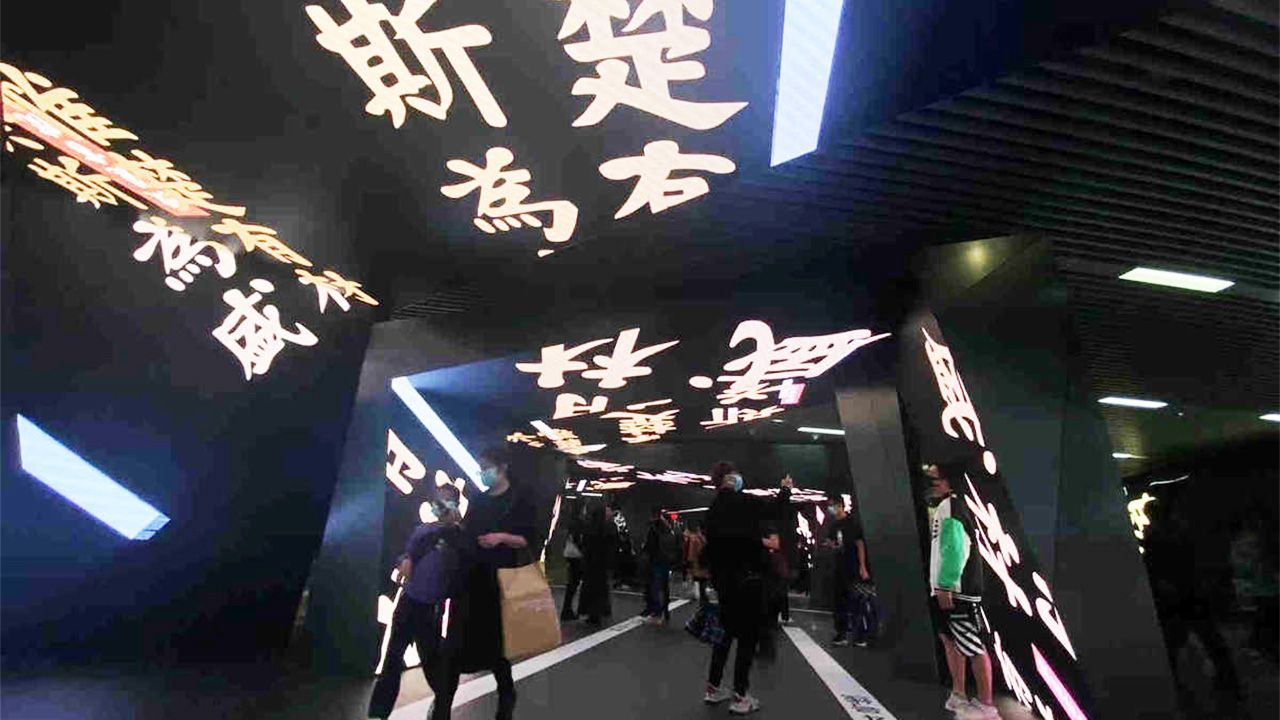In assessing the breathless growth of China’s second-tier cities, few metrics are more demonstrative than metro expansion. Changsha, the provincial capital of Hunan, exemplifies this truth. In 2015, a single line ran from east to west, connecting two halves of a city separated by the Xiang River. Today, Changsha is crisscrossed by six lines, 100 miles of track, and more than a hundred stations.
As with most large-scale urban projects unveiled in China over the past two decades, development comes first, beautification second. In late April, Changsha’s metro entered this secondary phase with the opening at Yingwanzhen station of Changsha Metro Digital Art Space, a 20,000-square-foot run of immersive art comprising six vast LED installations. While art corridors can be found at stations from Beijing to Shanghai, Changsha is the first to create a digital art museum.


Installations at the Yingwanzhen metro station in Changsha. Images: China Daily
The design partners, Fine Arts Academy of Hunan Normal University and Tianwen Metro Media, chose Yingwanzhen station for its diverse ridership and symbolic location. Sat on the intersection of lines 2 and 4, it serves a healthy blend of university students, office workers commuting east to the downtown, and tourists visiting nearby Yuelu Mountain and Orange Isle, a public park associated with the poetry of Mao Zedong. As the team at Hunan Normal University tells Jing Culture & Commerce, “The past, present, and future of Changsha blend together here: the west side of the river represents cultural heritage, the east side our vibrant, modern city.”
Perhaps unsurprisingly for a project closely associated with official authorities, the museum’s first exhibition, Happy Changsha is a celebration of the city itself. The several hundred thousand daily commuters are engulfed in a sea of abstract imagery associated with Changsha from the edifices of its thousand year-old academy institutions to the chili peppers that endow Hunanese food with its fiery reputation. The hope, the Hunan Normal University team says, is that exposure to positive public art offers succor and a moment of pause amid the rush of modern urban life. In the future, the museum plans to invite a range of creative teams to create exhibitions focused on public welfare, including “cross-border brands.”

Changsha’s other cultural attractions: Changsha Meixihu International Culture and Arts Centre (left), designed by Zaha Hadid Architects, and Arts Centre and Orange Isle, home to the Young Mao Zedong statue (right). Image: Gu Shi Yin / Dezeen, Shutterstock
Though a single initiative in a single station, the Changsha Metro Digital Art Space is indicative of broader trends sweeping China. First, immersive art experiences are proliferating across the country. Second, hastily erected cities with strikingly similar concrete and glass skylines are looking to art to differentiate themselves. “Public art is the most unique DNA of a city,” the Hunan Normal University team says, “one that reflects the true soul and character of a city.”
To date, Changsha has largely been synonymous with its cuisine and unrivaled entertainment industry, one that shapes China’s pop culture tastes. As signified in 2019 with the opening of the Zaha Hadid Architects-designed Changsha Meixihu International Culture and Arts Centre, Changsha lacks neither vision nor funding when it comes to public art projects. A new arts and culture hub may well be emerging.



